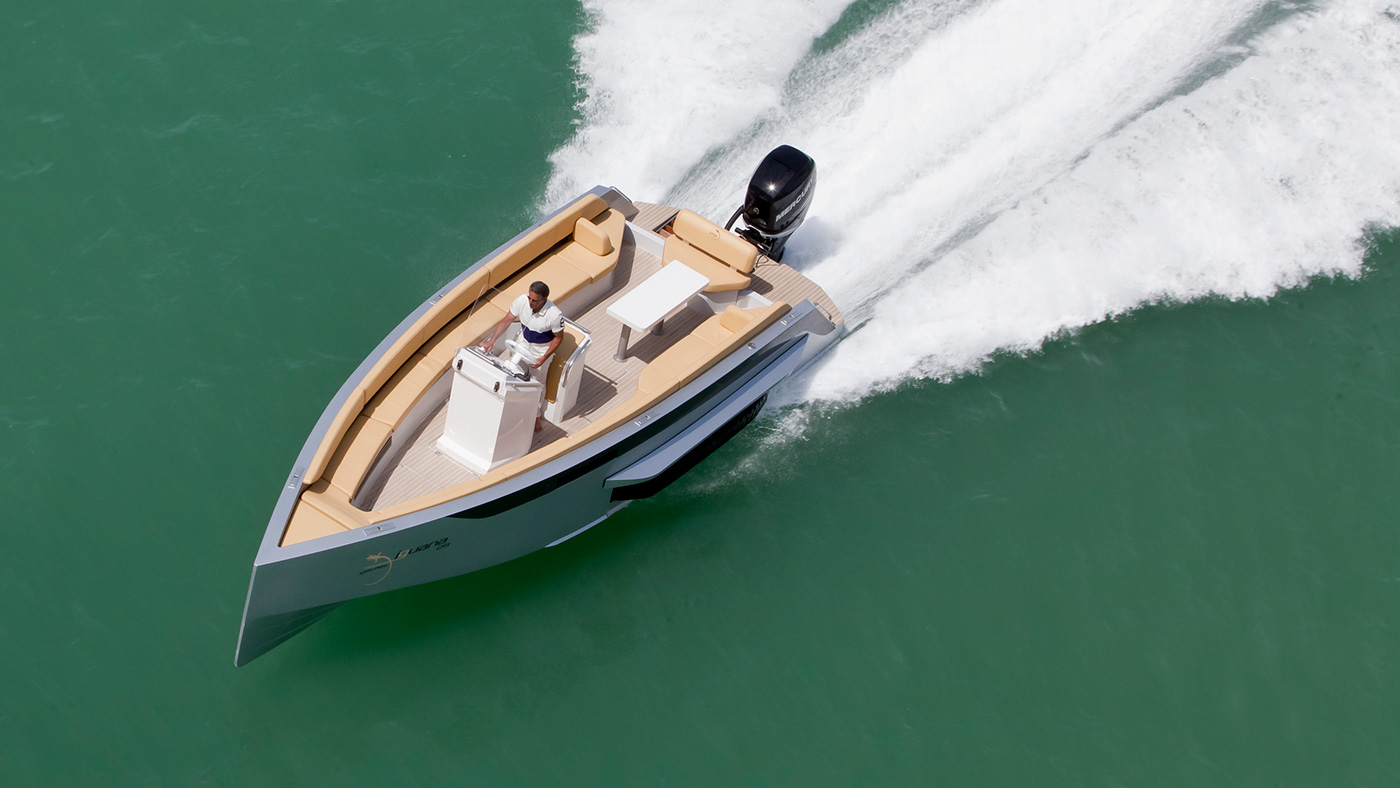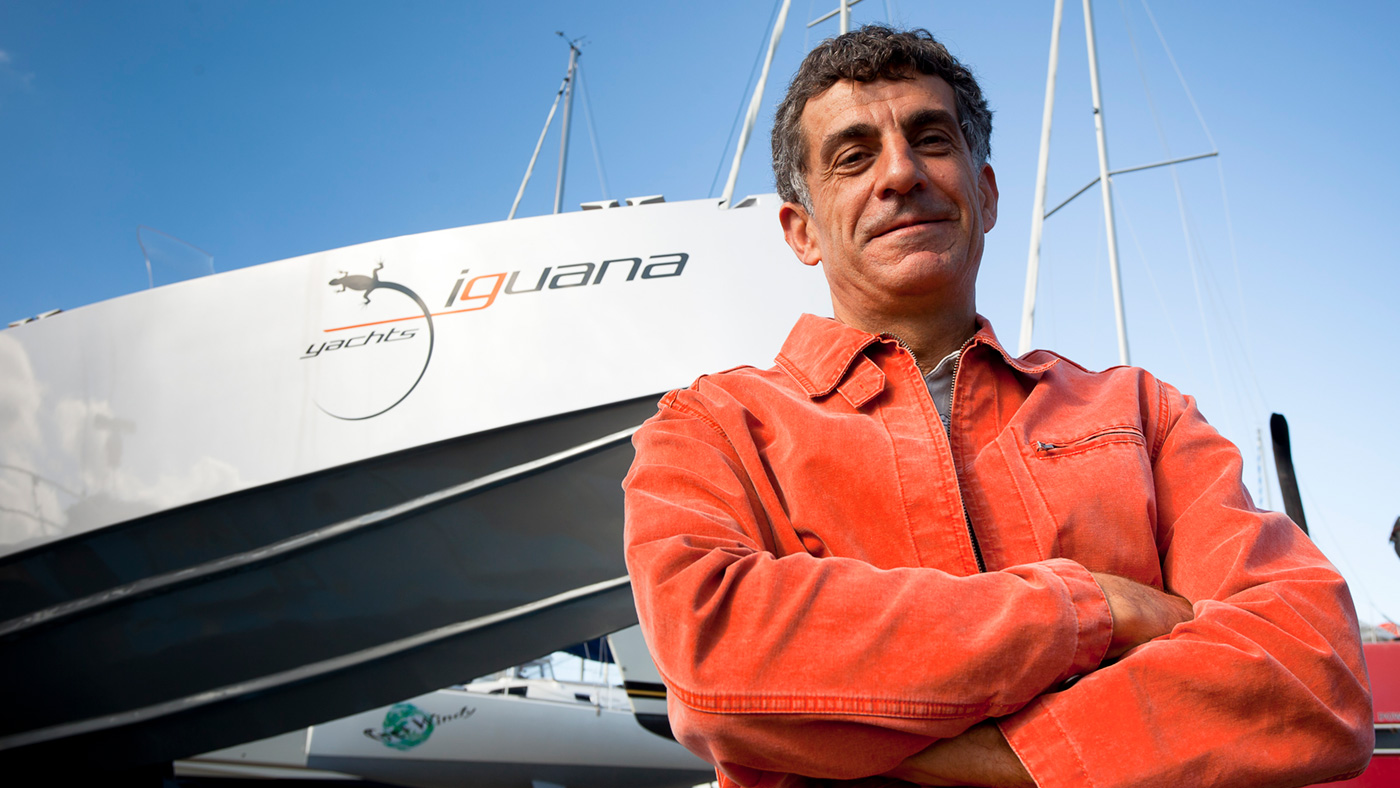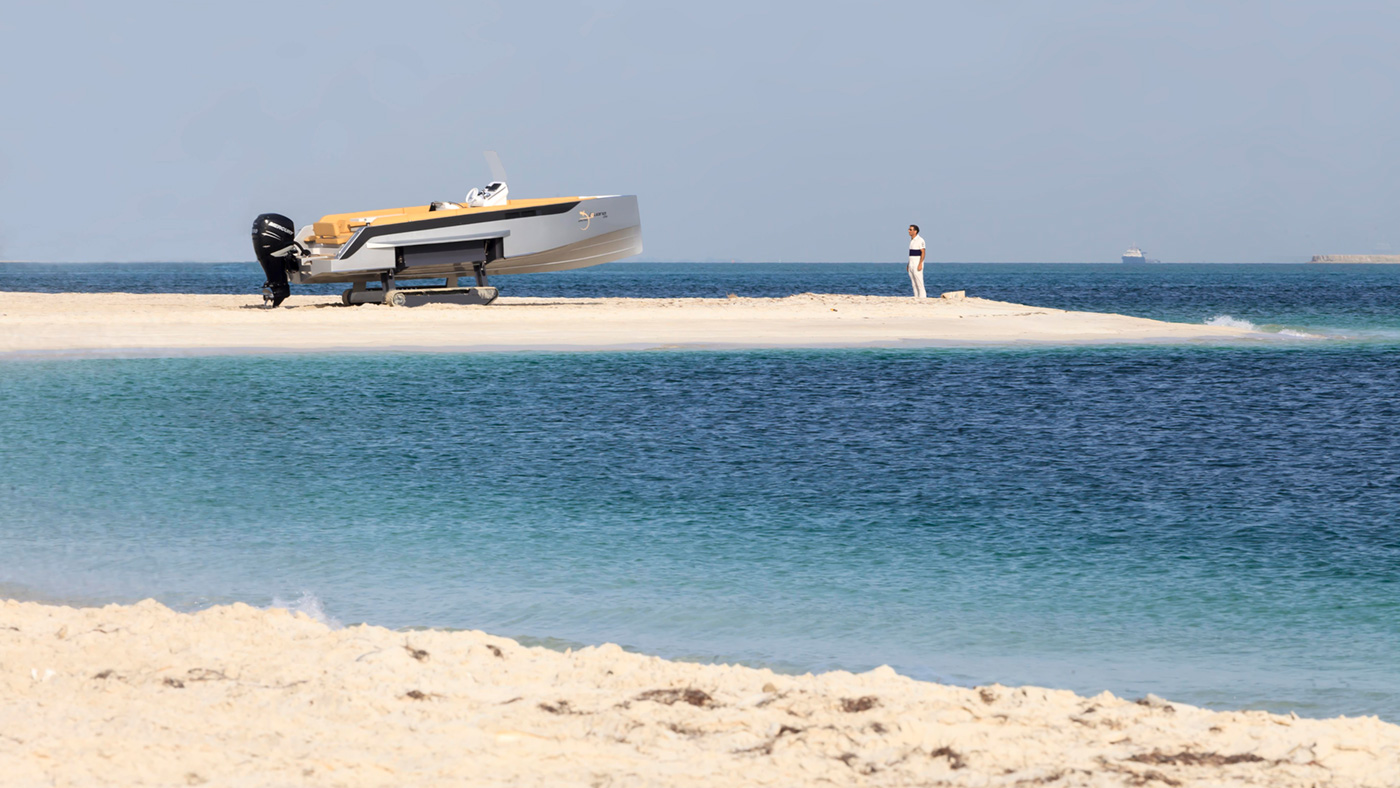Amphibious motor boating: Discover the Iguana speedboat
Iguana Yachts founder Antoine Brugidou describes his journey to create a luxury speedboat that transitions seamlessly from land to water

It's a bit like landing a plane. When you get close to the beach you just press a button and your landing gear unfolds from the hull – it only takes eight seconds, so it's very quick. At this point you are still moving with your outboard engine. You push two levers forwards to make the tracks start to move and when you reach the shore the tracks will grip it and drive onto the land. Once you can feel you are moving along the ground you just stop the engine and move the tracks to go wherever you want – it's very easy to manipulate with the levers.
The Iguana can go on any kind of terrain – pebbles, concrete, mud and even soft sand. That's the strength of the track – the weight is spread over a very large surface so it doesn't sink and you can actually drive it over places you would find it difficult to walk on. The ground pressure of the whole boat is similar to the weight of one person on foot. The system is very powerful, so you can go up steep slopes such as sand dunes too.
Going into the water is even simpler – you drive in with the tracks and once you feel you are starting to float you start the outboard engine.
The Week
Escape your echo chamber. Get the facts behind the news, plus analysis from multiple perspectives.

Sign up for The Week's Free Newsletters
From our morning news briefing to a weekly Good News Newsletter, get the best of The Week delivered directly to your inbox.
From our morning news briefing to a weekly Good News Newsletter, get the best of The Week delivered directly to your inbox.

I have sailed since I was young, but as I grew older I had less time so I started to do motor boating because it's quicker. I live in Granville, France, and there is a very nice harbour, but with very limited space. The wait for a mooring can be twenty years! So I would use a truck and trailer to drive my boat to the water and then haul it in, but this takes up quite a lot of time. Finally I decided it was crazy to go through all this hassle and had the idea to make an amphibious boat that I could just drive into the water.
Initially I thought it might not be feasible, but I really thought I should try to make it, so I went to see Antoine Fritsch – a very well known French designer who is a friend of my wife – and we started to discuss it. I didn't want a bizarre-looking craft, so I asked him how we could make a very nice boat that could also go on the ground. We looked at many different solutions and finally we came up with the idea of tracks.
The nice thing about the tracks is they look very natural when you fold them away because you just have a black rectangle along the hull (as opposed to round bubbles for wheels), which doesn't disrupt the streamlined design of the boat.
Making the Iguana was not straightforward. The product you see today is stable, streamlined and looks natural, but when you start a project with a blank page it's difficult to imagine exactly what is going to happen. For example, we needed to be sure the boat wouldn't fall over (because the tracks are limited in length and the boat is quite long) and all the parts needed to be resistant to corrosion. In the end we made three prototypes and the system has been totally redesigned and improved since the first one. We worked a lot with the weight of the boat – the hull and material has been changed to make it lighter, stronger and more efficient. The first prototype was made of aluminum and was much too heavy. Now the hulls are made from a fibreglass, carbon fibre and epoxy composite – a very specific infusion technology that racing sailboats are using. This makes the structure extremely strong, which is essential in order to support the mechanism of the foot releasing and moving along on the ground. As we have very specific parts, everything has been reinforced and designed specifically for us, with a view to fit the need for low weight and resistance. Our tracks, for example, are made from rubber and Kevlar, whereas normal tracks are made from rubber and steel, which is much heavier.
A free daily email with the biggest news stories of the day – and the best features from TheWeek.com

On the water the Iguana is extremely comfortable and stable. The boat's centre of gravity is very low, so you can turn while going very fast and it will not move at all, you will stay totally flat. It starts to surf quickly and goes through waves very well because of its wave-piercing bow. We tested it going into the English Channel, which is well known for having very strong winds and waves. The hull of the Iguana is made for this kind of sea.
The interior design of the Iguana is simple, but very well done. It's clean and unpretentious – there are no useless luxury aspects, but it's very comfortable and well finished. We have four models of Iguana at the moment and they are produced to order. There are many customisation options, such as different colours, deck patterns, hard tops, tables and sun loungers. Production takes between two to six months depending on the specific requests.
Our main clients are yacht owners, private island owners, seaside property owners and a few hotels. There are many potential uses for a boat like this – coastguards, rescue, scuba diving, transportation of goods, and for fun, obviously!
An Iguana requires very minimal maintenance compared to other boats – you just rinse it with clear water after each outing. And as it isn't stored in the water you don't need to apply anti-fouling chemicals to prevent things growing on the hull, so it is more environmentally friendly too.
Usually with motor boating you have to anticipate wanting to go in advance –prepare all your things, take the car, drive to the harbour... and then do all the same in reverse at the end of the day. It's like an expedition. With an Iguana parked at home you just think, 'Oh I want to have a swim' and five minutes later you can be in the sea, it's extremely spontaneous. You can even keep all your things in the boat. It's motor boating without any constraints.
Antoine Brugidou is the president and CEO of Iguana Yachts. He was previously the global lead for health and public service consulting at Accenture, France, where he worked for 25 years before leaving to found his own initiative; iguana-yachts.com
-
 A luxury walking tour in Western Australia
A luxury walking tour in Western AustraliaThe Week Recommends Walk through an ‘ancient forest’ and listen to the ‘gentle hushing’ of the upper canopy
-
 What Nick Fuentes and the Groypers want
What Nick Fuentes and the Groypers wantThe Explainer White supremacism has a new face in the US: a clean-cut 27-year-old with a vast social media following
-
 5 highly amusing cartoons about rising health insurance premiums
5 highly amusing cartoons about rising health insurance premiumsCartoon Artists take on the ACA, Christmas road hazards, and more